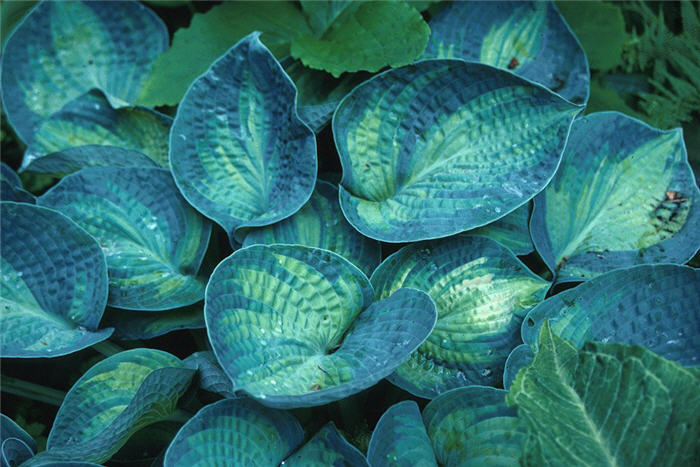| Botanical Name: Hosta tokudama 'Aureonebulosa' | |
| Common Name: Aureonebulosa Hosta |

-
Anatomy
-
Culture
-
Design
Plant Type
Perennial
Height Range
Under 1', 1-3'
Flower Color
White
Flower Season
Summer
Leaf Color
Blue Green, Yellow Green, Yellow, Variegated
Bark Color
n/a
Fruit Color
n/a
Fruit Season
n/a
Sun
Half, Shade
Water
High
Growth Rate
Moderate
Soil Type
Clay, Loam
Soil Condition
Average, Rich, Well-drained, Moist
Soil pH
Neutral
Adverse Factors
n/a
Design Styles
English Cottage, Formal, Japanese, Woodland
Accenting Features
Showy Flowers, Unusual Foliage
Seasonal Interest
Summer
Location Uses
Perennial Border, Shrub Border, Foundation, Patio, Raised Planter
Special Uses
Cut Flowers, Small Spaces
Attracts Wildlife
Hummingbirds
Information by: Stephanie Duer
Photographer: Linda Engstrom
Photographer: Linda Engstrom
-
Description
-
Notes
This is a very old hosta cultivar and it still has a following, and for good reason. It has large, wide leaves that are heavily textured, its deep corrigation casting shadows on the leaves and catching dew drops (or sprinkler water!). Leaves are yellow with wide blue irregular edges. Short and wide, it grows to about 12 to 15 inches tall and 15 to 24 inches wide. Flowers stand to 18 inches and are white.
Grow in well drained soil in part shade to full shade to dappled light. Some varieties are listed as being suitable for full sun, but in our hot, dry climate, they all benefit from some mid-day sun protection. Ideally, provide a loamy soil, amended with organic material. Remove spent flower scapes after blooming to encourage more flowering and for a tidy appearance. In early spring, remove spent foliage, taking care to watch for new foliage emerging from the crown. Though not thought of as a "water-wise" plant, Hostas do remarkably well in dry part-shade to full-shade conditions, and are frequently the victim of over-watering, succumbing to crown or root rot.